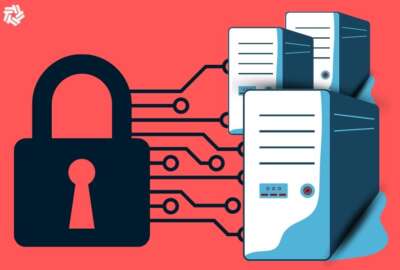The Intelligence Advanced Research Projects Activity has been funding research it hopes will have a big payoff not just for the intelligence community, but for the public as well.
Dr. Jason Matheny, the director of IARPA, told Federal Drive with Tom Temin that his organization has been contracting with top scientific talent to research some of the “hardest problems with the biggest impact” to solve.
“We find that some of our best ideas come from places we would’ve never expected. Those research contracts then are ways for us to get funding to scientists and engineers from around the world to work on some of our hardest problems,” Matheny said.
IARPA works alongside intelligence agencies on matters of national security, but the majority of its work, Matheny said, is available to the public.
“The bulk of work that we do is unclassified, it’s published openly, and in fact that’s one of the great advantages of our research, is that it can benefit from peer review, and it can advance the whole of science,” he said. “In many cases with geopolitical events, we don’t have an enemy. The enemy may be instability, or the enemy may be disease, and that’s not a case where the enemy benefits from having published research. … in other cases, we do have to worry about what’s published, and in those cases we have to classify the research.”
Currently, IARPA has been committing its resources to anticipatory intelligence, which provides a forecast of threats that could cause major disruption.
“The reason for wanting to anticipate events is so that we can prepare for them. In some cases, we can send out travel alerts to U.S. citizens if they’re going to be traveling to a certain place. We can provide for greater security when we have personnel who are stationed overseas, and we can improve national security by anticipating those events that are likely to be most disruptive to the U.S. economy,” Matheny said.
But predicting future events isn’t an exact science, so IARPA hopes to improve the accuracy of its threat forecasts — much like a weather forecast.
“Your weather forecast doesn’t know for certain what the weather will be, but will assign a probability to whether there will be rain, for instance, and those probabilities in general are pretty accurate,” Matheny said.
IARPA has also been working on a program called DIVA that automatically detects threat activity in video — like somebody dropping a bag, exchanging a bag with somebody else, branding a weapon, or loitering for long periods of time.
“Those kinds of activities are ones that we want security monitors to be able to detect in real time. We don’t want analysis simply to be focused on forensics after an event has happened, looking backwards and seeing what occurred. We want to be able to detect that and warn security personnel. It’s really infeasible to do that just with human labor,” Matheny said.
‘Crowdsourcing Q’ from James Bond
As a research organization, most of what IARPA funds is early-stage, and won’t go straight to the intelligence community field operations. But some of its research, like translation through machine learning, has wide-ranging benefits.
Computer translation of less-known languages, like Creole or Zulu, stands to benefit a number of federal agencies.
“Google and Apple and others provide machine translation for languages that have large numbers of speakers. The intelligence community — and other parts of society, including the State Department — have an ongoing need for machine translation tools for those languages that don’t have many speakers,” Matheny said.
Machines ‘learn’ a language by storing several samples of side-by-side translations, and currently requires thousands of examples. IARPA hopes to trim that down to a few hundred or dozen.
One of IARPA’s more enterprising goals is better understanding how the human brain outperforms some of today’s most advanced computers.
A computer that performs the number of operations the human brain is capable of would consume millions of megawatts of energy, though the brain uses only about 20 watts of energy.
“You can think with a cup of coffee and a banana, and yet it requires something like a small power station [to power a computer]… so there’s some computational tricks clearly that the brain is using that we could learn from,” Matheny said.
Because of the broad purview of IARPA’s research, Matheny said his job often feels like the role of Q in the James Bond movies, but with better resources.
“Our problems are simply too numerous and too complex to solve in one laboratory, so we’ve crowdsourced Q — we’ve drawn in the best talent, Nobel laureates, Academy of Science members, IEEE [Institute of Electrical and Electronics Engineers] fellows in order to focus on our hardest problems.”
Copyright
© 2024 Federal News Network. All rights reserved. This website is not intended for users located within the European Economic Area.





